South Sudan:
Cattle, Conflict and Coping
The outlook for food security in South Sudan in July 2015 is bleak, as represented by the food insecurity situation (described by the IPC data in the map below), with many states in crisis phase and a smaller number already in a state of emergency. While there is no precise correlation between conflict events and hunger levels, there is some obvious association or contribution, as represented in the map.
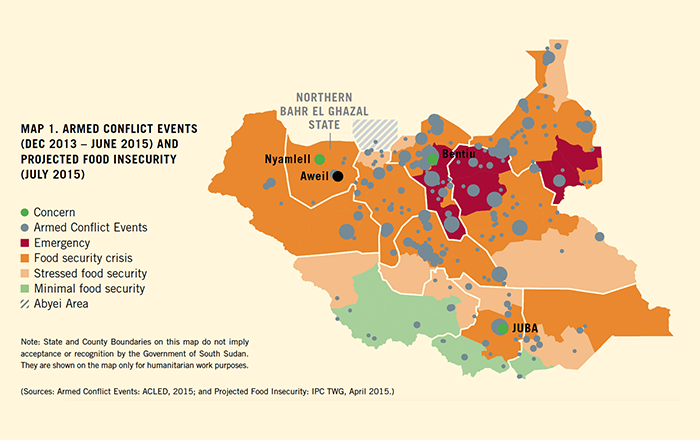
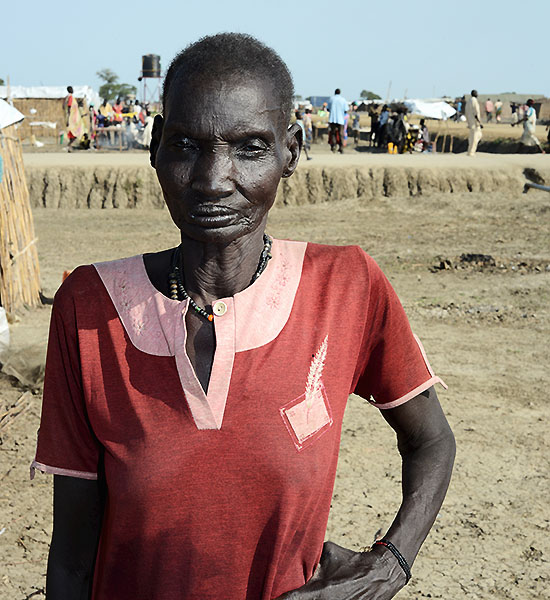
In the past, the fighting was only between soldiers. Civilians, children, cows, gardens and houses were not targeted. This conflict is totally different. Naditne Thoch from Guit
The potential of South Sudan is enormous. It is blessed with rich natural resources and deep agricultural potential. It has a young and vibrant population embarking on a newly independent future. Widespread and often intense armed conflict, however, is preventing the South Sudanese people from realising their hopes and dreams.
In mid-2015, South Sudan is facing another hunger crisis, one triggered by late rains and the many consequences of conflict, including spiraling inflation, interrupted trade and the lack of cultivation due to displacement. Together, these create a perfect storm and leave a large swath of the population at risk of extreme hunger. There is a strong folk memory of previous hungry years and widespread fear that 2015 will match some of the worst years on record.
Conflict in South Sudan: A Potted History
The South Sudanese people have experienced armed conflict almost continuously since the 1950s. Over 2.5 million lives have been lost and the livelihoods of tens of millions of people have been affected (MOHDAM, 2010) over two particularly intense periods of armed conflict.
The first was the civil war between the government of the Republic of Sudan and the Sudanese People‘s Liberation Army/Movement (SPLA/M) which lasted from 1983 to 2005. This was largely regarded as a North–South conflict for control over resources and, from the perspective of the SPLA/M, for political autonomy, self-determination and secularism. The conflict intensified after the discovery of oil in the South in the 1980s. Political negotiations in the early 2000s led to the signing of the Comprehensive Peace Agreement in 2005 and ultimately to a referendum in South Sudan on independence. In 2011, South Sudan proclaimed its independence and became the newest state in the world.
The second and current conflict within the newly independent Republic of South Sudan erupted in December 2013 with a split in the SPLA government. This split is associated with ethnic divisions between the Dinka, led by President Salva Kiir, and the Nuer, led by ex-Vice President Riak Machar. As of mid-2015, the fighting continues across South Sudan, especially in Unity and Upper Nile States in the north of the new country. There has been major population displacement. As of July 2015, there are 1.6 million internally displaced people, 607,608 recorded South Sudanese refugees in neighboring countries and 4.6 million people severely food insecure in South Sudan. The number of civilians seeking safety in PoC sites in UNMISS bases is 166,142, including 103,913 in Bentiu. This represents an increase of about 64,000 people since December 2014 (UNOCHA, July 2015).
The Link between Armed Conflict and Hunger
Much has been written about the link between armed conflict and hunger, both the obvious impact of conflict on hunger as well as food insecurity as a contributory factor in conflict (Messer et al., 2001; Teodosijevi , 2003; Messer and Cohen, 2006; World Bank, 2010; Brinkman and Hendrix, 2011; Simmons, 2013; Breisinger et al., 2014; Breisinger et al., 2015; de Waal, 2015).
Tufts University and the Overseas Development Institute have written much on the Sudanese and South Sudanese contexts, examining issues of secure livelihoods in the context of a protracted conflict (Maxwell et al, 2012; Gordon, 2014; Maxwell and Santschi, 2014; Santschi et al., 2014; d’Errica et al., 2014) and looking at lessons from Operation Lifeline Sudan (Maxwell et al. 2014, 2015). The learning from these and other studies informed the nature of the enquiry of this case study.
Glimpses of Reality in South Sudan
The following content reflects the memories, experiences and coping strategies of ordinary South Sudanese people who have been living through a violent era. Their perspectives were captured in discussions over the summer of 2015 involving over 150 people, some through Focus Group Discussions and some through individual interviews.
These took place in or near Nyamlell, Aweil and in Bentiu. The intention of this piece is to amplify the views and voices of community members regarding the link between hunger and armed conflict, and to reflect the choices they face and how they make decisions when faced with limited choices.
Context 1:
Indirectly Affected by Conflict: Northern Bahr el Ghazal
"Money falls through your fingers but cattle are forever." Dinka proverb
“Men can find easily reason to fight, while finding food is more difficult.” Nuer proverb
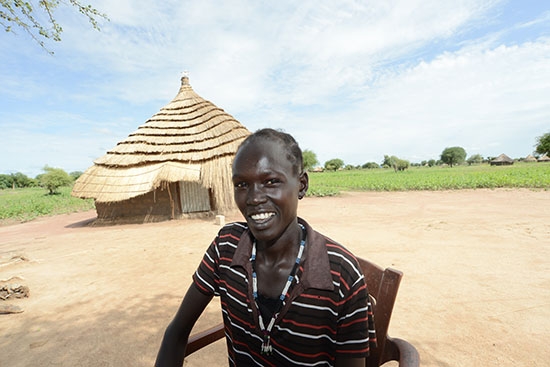
...for now, we are worried about two major consequences, hunger and the death of our children... Angelina Abuk Nyibek from Langich, Marial Bai
Northern Bahr el Ghazal is in the northwest of South Sudan bordering the South Darfur state of the Republic of Sudan. It lies in the western flood plains and the main livelihoods are based on livestock and sorghum cultivation.
Memories of Hunger
Members of the community there remember vividly the direct attacks from the North and the worst years of those attacks. They experienced the trauma of fleeing for their lives, witnessing friends and family killed, houses burnt down and cattle raided. The worst years in their memories were those when rains failed or flooding resulted in a poor harvest, and they also were attacked and unable to cultivate the land. Those periods were followed by severe food shortages.
Attacks were particularly bad in 1993. People reported that all the cows were looted; the chiefs were killed; the houses were burned down leaving people to live under trees. The current Paramount Chief said:
I can tell you that there used to be 1,543 people here in this village but after those attacks, only 89 remained.
Worse still was 1998 when people actually starved as a result of an intense drought combined with violent attacks during which their grain was burned. Many said that 1988 was the worst year of all, due to a massive invasion by the Misseriya (Arab cattle herders from Kordofan who frequently migrated south into Dinka territory.)
The invaders looted cattle and burnt crops and the granaries. Then, flooding occurred in July. Many people left their homes, starving to death on the roads en route to North Sudan. The remaining community had to feed the SPLA creating another draw on food. In those days, people used to bury food beneath their houses or in the bush to keep it out of the hands of the army.
Current Conflict Situation
Community members in Aweil are currently affected by two conflicts, the internal fighting in South Sudan and the sporadic attacks from groups in the Republic of Sudan or allied factions.
Both of these conflicts are having very serious indirect impacts on family household food economy. The Nutrition and Monitoring System Field Report’s preliminary findings (FSNMS R15) painted an alarming food insecurity situation in the four months from May until August 2015. According to the key information, triangulated with monthly market survey data, a combination of factors such as poor yields in 2014 due to erratic rainfall, insecurity along supplies routes, multiple taxations and high food prices as well as a high inflation rate mean that the food situation looks very bleak.
Other impacts include not being able to get money transferred from family members who have migrated or who work in the army and are fighting far away, and loss of (male) labour to cultivate the land. The importance of cattle movement as a livelihood strategy in South Sudan should be noted and the ‘cattle camps’ are central to the fabric of South Sudanese society and culture. Conflict has seriously impacted cattle movement for dry and wet season grazing, and such disruptions have social and cultural knock-on effects.
Coping Strategies
Hunger is a recurring reality for the people living in Northern Bahr el Ghazal. They encounter lean years on a regular basis, mainly due to drought or flooding which ruins the crops.
Responses to food shortages are many. They begin with people reducing the quantity of food they eat, and then the frequency of their meals from twice to once a day. They may collect firewood and sell it in the market to get cash to buy food. They may collect wild foods, such as palm tree seeds or wild green vegetables growing in the forest, consuming some and selling the rest. A lesser known coping strategy involves alternating wild foods and sorghum in order to make the sorghum last longer.
Some borrow food or beg from relatives or neighbours, perhaps doing labour for the relative or neighbour such as ‘opening land’ or weeding for which they can get cash or food. Other coping strategies include selling chickens, then goats and finally cows. Given the importance of cattle in the culture and the economy, selling cattle is seen as a major negative coping strategy. But it is done in order to buy basic food.
Another extreme coping strategy is collecting wild cassava in swampy areas which are two to three days walk away. At home, the cassava is processed into flour for cooking. Some reported that this wild cassava causes diarrhoea in children.
When all of these coping strategies have been exhausted, people migrate. Usually male members of the family move away for seasonal labour and send remittances home. A worse scenario is when people are forced to abandon the land altogether and move away permanently.
Since Independence, transferring remittances from the Republic of Sudan is increasingly difficult, and since December 2013, transferring remittances within South Sudan has also become more difficult.
Food & Nutrition Security Today
In July 2015, the sorghum crop was seen to be in a very poor state due to late rains. It is unlikely to recover this year and community members in Northern Bahr el Ghazal are already selling goats, calves and cows to buy food from the market. Traders have stopped lending food because they know that people cannot repay them. Respondents gave plenty of examples of recent inflation. Over the first six months of 2015, a 3.5 kg bag (malwa) of sorghum has gone from 10-15 to 35 South Sudanese Pounds (SSP), while groundnuts (1.5 kg) went from 5 SSP in 2014 to 20 SSP.
The community expects significant hunger in the coming months; they are already deep into their coping strategies and a failed harvest will see them in serious trouble.
Context 2:
Direct Impacts of Conflict: Bentiu POC Camp
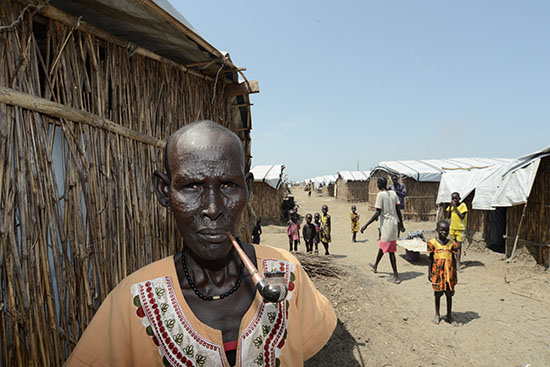 Mary Nyakuan from Langich, Marial Bai.
Mary Nyakuan from Langich, Marial Bai.
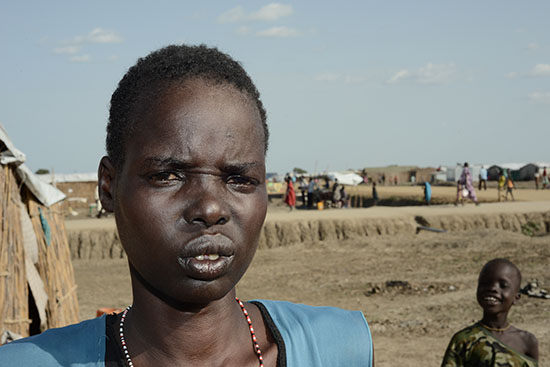 “If I was not worried for my life, I would have stayed in the village with the cows.” - Ntabuok Wated from Guit
“If I was not worried for my life, I would have stayed in the village with the cows.” - Ntabuok Wated from Guit
Bentiu is the capital of Unity State in the north of South Sudan, bordering Southern Kordofan State in the Republic of Sudan and the contested Abyei area. It lies close to the Nile and its tributaries, and is in a water-rich flood zone where the livelihoods derive from livestock, sorghum, maize, simsim and fish.
Concern has been responding since early 2014 to the humanitarian needs of displaced people at the Bentiu UNMISS Protection of Civilians (POC) camp and in 2015 has expanded to provide emergency nutrition services in rural areas in Unity state.
Memories of Hunger
The residents of this POC camp have many memories of flooding and drought. In 1988 after a very bad flood, they ate flood resistant traditional plants like ‘chesh’ (linked to the coconut), coconut and water lilies and leaves. They drank cows’ milk and killed cows for meat. Mary Nyakuan, from Bentiu, remembered:
The worst hunger we had was in 1988. The flooding destroyed our crops. There was also too much tsetse-fly which disturbed the cattle, and calves drowned in the water.
People also have memories of drought. Ntabuok Wated, age 30, from Guit, stated:
In the last ten years, we have had too much drought. We did not plant at all sometimes, but we always had our cows with us and could depend on their milk.
Current Conflict Situation
The POC residents all reported that the only reason they had fled to UN protection was out of fear for their lives. They felt that they were being targeted for abduction and killing. Most significantly, they noted that the targeting of civilians differentiated this from previous outbreaks of fighting. In both fighting between the SPLA and the Sudanese Armed Forces (1982 – 2005) as well as during previous splits within the SPLA, combatants were the primary targets, though some ‘collateral’ killing of civilians occurred. In this conflict, interviewees reported that houses were burned down, crops were deliberately destroyed, cattle and other livestock were taken and elders, women and children were either abducted or killed. Community members also reported the rape of women.
These effects of armed conflict are the worst imaginable, and hunger was in fact seen as a secondary effect.
Coping Strategies
In fleeing such horrors, people’s coping strategies were limited. They said that when the fighting came to them, they fled to the bush; when the fighting came to the bush, they fled to the POC camp. They took from one to 20 days to reach the protection of the UN POC. They came from places like Koch, Guit, Nhialdiu and as far away as Leer in the south of the State. On these precarious journeys, people ate water lilies from the rivers and wild foods from the forest, and suffered days and days of hunger.
They described eating the ‘gum,’ the part of the tree exposed when one cuts a branch diagonally. They reported surviving solely on that at times. They also ate the leaves of trees and mentioned the lalup tree, the buaw tree, the nyat tree, the koat tree and also mango leaves.
They said that they were familiar with some wild foods from before, but not so many since they had previously depended on milk more in times of shortage. The only water they could get was from swamps and they neither boiled nor filtered it. The people we interviewed reported witnessing one woman who died of hunger on this long walk to the POC camp, and hearing of others.
Before they were forced to flee, their coping strategies were varied. They ate the same foods but less quantities. After reducing portion size, they began to reduce meal frequency to once a day. When they were short of food, they prioritised who got it. Children between the years of 2 to 5 were the first to be fed, then children over 5 years, then grandparents, followed by the men and finally the women. Their proximity to rivers was also important.
We would plant in the summer and irrigate. We planted near the river banks so it was easy to irrigate. We would also dig wells in the river beds, for drinking water and for irrigation. We did not migrate.
The most dangerous coping strategy was to go into the bush for firewood or grass, due to the threat of attack by wild animals.
Food & Nutrition Security
The impact of the conflict on people’s food and nutrition security has changed over time. Before they fled their homes, people’s crops and livestock were in the line of fire, quite literally. Armed forces deliberately destroyed crops and stole livestock and seemed to employ what approached a “scorched earth” policy. Once the women and their children arrived at the camp, they were starving but not dying. They had to register and get a biometric ration card and then wait for their turn in the queue. While they were waiting, they were given food by people who they knew, and some degree of lending or sharing took place.
Those who had been in the camp for longer than three months reported being happy with the ration and had enough food. However, they had become reliant on external support by humanitarian agencies, in terms of both protection and food and water.
There appears to be a worsening of nutritional status of children from arrival to several weeks later. Concern staff expressed worry over the rates of global and severe acute malnutrition (GAM and SAM) being below the emergency thresholds on arrival, but exceeding them up to a month later. This could be related to delays in getting the POC ration or perhaps to other reasons. Mothers suggested that the environment and weather in the POC is different from at their homes so their children got diarrhoea, fever and eye pain. We also heard reports that mothers who received a lot of PlumpyNut (a ready-to-use therapeutic food for children over six months to treat severe acute malnutrition) and PlumpySup (a lipid-based nutrition supplement for children, used to treat moderate acute malnutriton) sold some of it in the market in order to buy food for their older children. This obviously undermines the nutritional aims of these products.
Conclusion
Concern Interventions
Concern supports improved food and nutrition security in Northern Bahr el Ghazal, and strengthens the health service in Aweil West and Aweil North. In Bentiu, recent humanitarian intervention includes emergency shelter, emergency nutrition and infant and young child feeding as well as water and sanitation in a camp of over 100,000 IDPs.
Concern has also carried out emergency nutrition activities in rural areas in Unity state. In Juba, Concern works in emergency nutrition and food and voucher distributions in the POC camp at UN House.
The response of the 1998 hunger crisis in South Sudan prompted discussion and promoted new thinking within Concern which allowed the organisation to test new approaches. The difficulties of community access to Therapeutic Feeding Centres and of getting food to people through flooded areas prompted discussions on how to address severe acute malnutrition more effectively. Concern was therefore ready to test and implement the community-based therapeutic care approach when it was proposed, and this led to the breakthrough of Community Management of Acute Malnutrition (CMAM). Much of our work in nutrition in South Sudan since then has implemented this approach through the government health departments.
South Sudan presents most of the challenges of working in a so-called ‘fragile state’: protracted conflict, cyclical environmental hazards, weak capacity in remote rural areas, under-developed infrastructure and a weak civil society. Concern is striving to find realistic and durable solutions to these challenges while balancing the need to keep people alive during crises.
In Unity State, the main obstacle to the camp residents returning home was the lack of a secure peace. If lasting peace came, they felt optimistic that they could regain their original livelihoods in a matter of six months, which seems surprisingly quick and would depend in part on the timing in terms of planting season.
In Northern Bahr el Ghazal, poor members of the community use a very analytical balancing of risk and opportunities related to their household food economy. The community lives a roller-coaster from the highs of food sufficiency and asset accumulation to the lows of asset depletion, negative coping strategies and severe hunger. The lowest point of this curve seems to be when climate variability coincides with the impact of armed conflict. The hope in this story of recurring disasters and frequent knock-backs is in the community’s ability to bounce back and rebuild an asset base to protect themselves against future disasters.
Justino’s (2008) suggestion that indirect effects of conflict on households are channelled through markets, political institutions and social networks seems relevant. The markets and the social networks continue to operate quite dynamically, but the political institutions seem distant and ineffective. This is reflective of commentaries on the weak functioning of state institutions in many African countries (Andrews et al., 2012; Andrews, 2013.) The conclusions of Alinovi et al. (2007) suggesting that dysfunctional institutions lie at the heart of structural food insecurity seem apt in the context of South Sudan.
The causes of conflict are manifold and complex, relating to an array of aspects of the human condition including identity, economic need, greed and insecurity. Often, small differences are amplified by those seeking power, beautifully articulated by the phrase “the narcissism of minor difference” (Ignatieff, 1998).
Preventing and putting an end to armed conflict in particular are huge tasks requiring leadership and mediation skills that require high level political skills. Stability and economic growth may be the best drivers of peace and security. Conflict prevention, mitigation and resolution must be given much greater prioritization by the international community.
In terms of their resilience to recurring shocks, be they climatic or conflict-based, the communities have regularly experienced these and have been able to both absorb them and to adapt at some level. They have not been able to transform their livelihoods to eliminate or minimise these risks, however. What is clear is that whenever these two forms of shock, climate and conflict, coincide, the communities suffer severely and it takes them considerably more time to recover. The situation in South Sudan in mid-2015 suggests that such a perfect storm is upon us again.